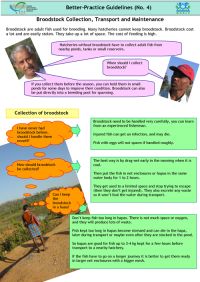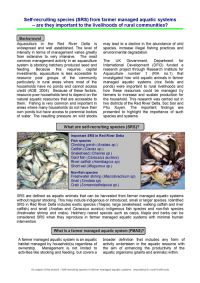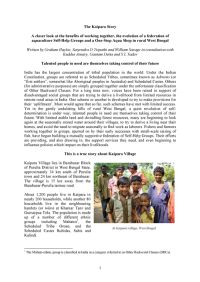When people talk about growing fish, many say their biggest problem was getting started. In Delhi in April 2003 farmers and officials met with policy makers and said that one of their most pressing recommendations for change was to the way information is made available. They asked for a single-point, under-one-roof center, near to their place, where they could get much of what they needed.
These guidelines illustrate good practice for broodstock handling and management using practices that are suitable for small-scale operations. This document is also available in Oriya.
Self-recruiting species are defined as aquatic animals that can be harvested from farmer managed aquatic systems without regular stocking. This may include indigenous or introduced, small or larger species. Identified self-recruiting species in the Red River Delta includes exotic species (tilapia), large (snakehead, walking catfish and river catfish) and small (Anabas and Carassius auratus) indigenous fish species and non-fish species (freshwater shrimp and crabs).
A bold bid by women in Kandhkelgaon Village, West Bengal, to break out of their poverty trap. This story describes how women who could no longer make a living from weaving turned to aquaculture. Success came, not just through income generation but by reducing the cost of being poor. The story highlights the influences that constrain and enhance development, including the sheer bravery and entrepreneurial spirit of people who are poor.
A closer look at the benefits of working together, the evolution of a federation of aquaculture self-help groups and a one-stop aqua shop in rural West Bengal. India has the largest concentration of tribal population in the world. For a long time now, voices have been raised in support of disadvantaged social groups that are trying to derive a livelihood from limited resources in remote rural areas in India.




